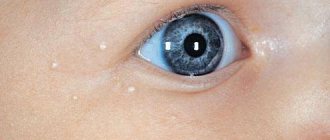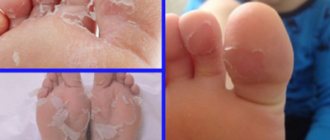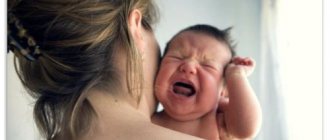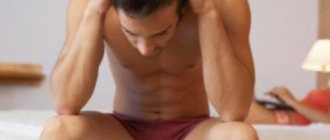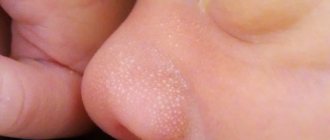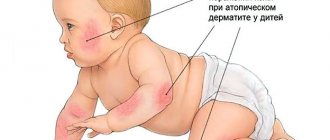Milky crusts appear on a baby’s head due to the active work of the sebaceous glands. The child’s scalp is peeling, this is one of the signs of their manifestation. It causes a lot of anxiety in adults. Doctors record that crusts appear in 70% of newborns. They go away on their own by 12-24 months.
Back of the head with crusts
Features of the functioning of the sebaceous glands on the head
Sebum is secreted in babies to protect the body from infections. The sebaceous glands work more actively than in adults. Sebum covers the entire body, which prevents the penetration of harmful bacteria and viruses. Closer to the age of one year, the functioning of the glands returns to normal.
Crusts appear on the scalp. They are less common on the face, behind the ears or armpits, and peeling occurs on the child’s neck.
Important! Due to the increased activity of glandular cells, newborns are bathed daily.
Causes of milk crusts on the head of a newborn
Children under one year of age are constantly in an upright position. The head and back of the head, ear area are in contact with the surface of the bed linen. Sebum is secreted and accumulates in certain areas. At this time, skin particles fall off and are replaced with new ones. Due to the abundance of excretion, the remnants of the epithelium adhere to the surface of the skin and harden. Milk crusts form and the child’s scalp peels.
Causes:
- Frequent use of baby shampoo activates the increased activity of the sebaceous glands.
- Lack of care for baby's hair.
- Increased sweating due to heat.
- Insufficient hygiene in the area of crusts.
- Allergy to baby shampoo.
The main thing is that peeling on a child’s head does not cause harm to health and goes away without treatment. It is impossible to say exactly when crusts appear on a newborn’s head. In some babies, manifestations begin closer to the first month, in others - by the third. It all depends on the individual characteristics of the body.
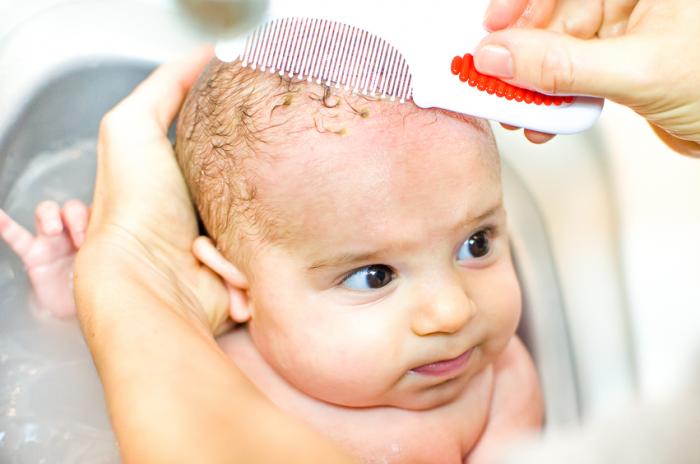
The baby is bathed and brushed
Causes of dry scalp in babies
Caring mothers often face the problem of very dry skin on the heads of their children, and there are certain reasons for this: 1. The adaptation process. In this case, you don't have to worry at all. It’s just that a child, deprived of a comfortable, moist and nutritious environment, begins to react to the world in his own way. The sebaceous glands of the scalp still work very poorly and therefore cannot provide the necessary hydration. 2. Very dry air in the room. The room in which the child spends the most time has humidity below normal. As a rule, dry skin worsens during the heating season. 3. Improper care. Of course, we try to give the child the best, but sometimes we can overdo it and choose inappropriate hygiene products for the baby. 4. The appearance of seborrheic dermatitis. Sometimes you can find small yellow or gray crusts on a child’s head. This is absolutely normal at a certain age. 5. Allergies. Sometimes dry scalp can indicate allergic reactions.
Is it necessary to remove newborn's scabs on the head?
Milky crusts on a baby’s head are considered a physiological norm. Most often they go away on their own by 12 months. In rare cases, remnants persist until 2 years of age near the temporal lobe. They are purposefully removed if accompanying symptoms occur:
- suppuration in this area;
- unpleasant odor;
- the appearance of a white coating;
- bruising;
- the crust may become wet and ichor may be released;
- itching in a child;
- swelling;
- redness of the skin around.
Such signs indicate penetration of infection into the deeper layers of the skin. It is necessary to start treatment and consult a doctor. The lesions spread not only on the head. Crusts can be on:
- armpits;
- behind the ears;
- on the cheeks;
- neck;
- inside the folds.
Peeling is also observed in these areas. This means that the epithelium gradually falls off. No intervention required here.
Important! Hygienic procedures help soften the crusts.
If crusts appear on a child’s lips or face, eyelids, near the eyes, this indicates diathesis (a manifestation of an allergy to food). It occurs if a breastfeeding mother has eaten a product from the prohibited list, or the formula prescribed by the pediatrician is not suitable for the newborn. The child's body is receptive to new products. The immune system reacts instantly.
Causes of peeling skin on the head
Of course, washing the baby with baby soap is not bad, but not all children are suitable for such care. Each manufacturer of baby bathing products adds different ingredients to them, it is likely that you have chosen the wrong soap or gel for bathing your baby.
Try to purchase a different product for washing your child, a softer one, and also thoroughly rinse it off the scalp at the end of the water procedures.
We also recommend reading our article: Rash on the stomach and back of a child - causes

Is the water at home good? The skin of an adult quickly adapts to the composition of water, but an infant is a completely different matter. If you suspect that the water that flows from the tap at home is not entirely good, then solve this problem by installing a filter on the water, or boil it for bathing at least in the first months of the baby’s life.
Quite often, a child’s scalp peels due to unsuitable washing powder or gel. Even if you put the washing machine on an extra rinse or manually rinse every little thing of your son or daughter, tiny particles of powder still remain in the fabric.
- Frost and sun
Of course, sunbathing is important for children, because it enriches the child’s body with vitamin D, but even short walks without a hat can cause sunburn on the baby’s head, which subsequently begins to peel off.
It is equally important to protect the child from strong winds and frost, which can also cause redness and peeling on the baby’s face. In windy and cold seasons, treat your child’s face with rich baby cream 20-30 minutes before going outside, check that it has time to be absorbed into the skin and feel free to send it into the fresh air.
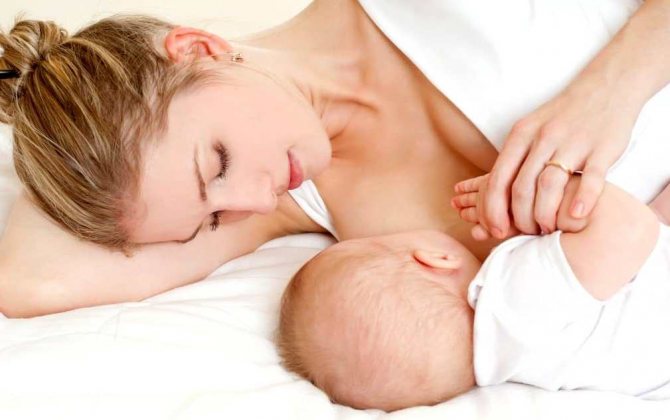
Quite often the skin on a baby’s scalp peels due to allergic reactions. If the baby is breastfed, then the mother needs to carefully review her diet in the last few days, eliminating foods that can cause allergies, these include sweets, citrus fruits, very spicy and salty foods.
If the baby is fed formula, consult with your pediatrician about the likelihood of allergic reactions to it and discuss the option of replacing it with something else - hypoallergenic.
Crusts on a child’s head can also appear due to the use of hats and towels made of coarse fabric. Please note that the pile of the towel should be soft; it is important not to dry the baby, but to blot excess moisture from the surface of the body and head. When purchasing clothes and hats, first pay attention to what fabric they are made of; it is advisable that the items contain a minimum of synthetics.
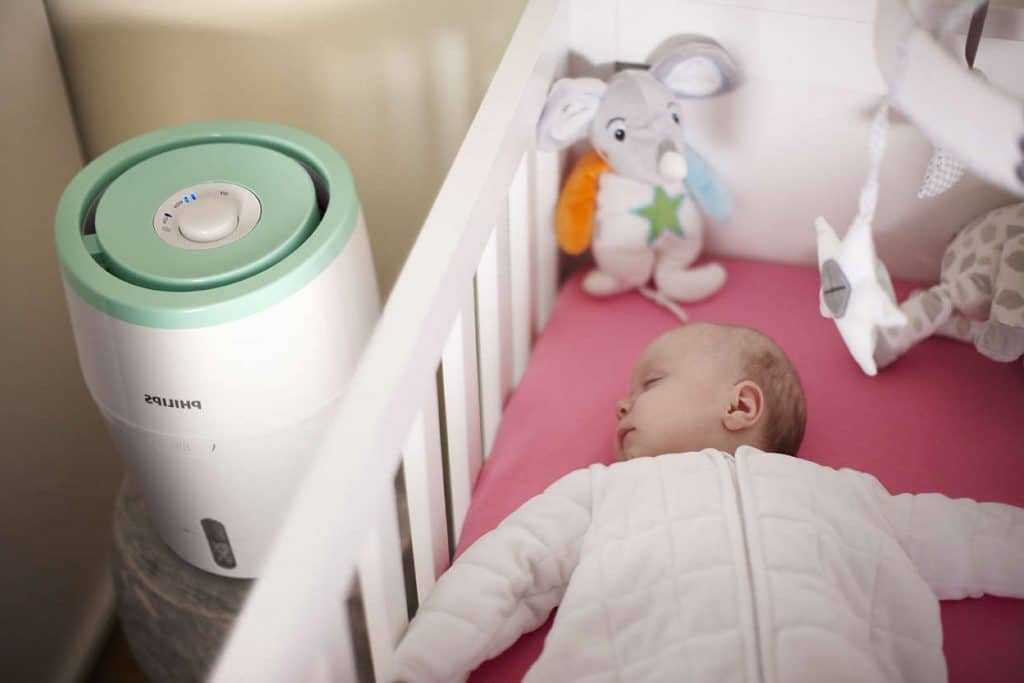
Sometimes, a month-old baby’s scalp peels due to the air in the room being too dry. By the way, this can also cause the baby to have a severe cough. We have already told you what to do in this case – moisturize!
For this purpose, you can install an air humidifier, hang wet towels on hot radiators, and wipe the dust and floors with a wet cloth more often.
How to remove milk crusts on a baby's head
Doctors have different opinions when it comes to seborrheic or milky crust on the baby’s head. Some people think that they need to get rid of it as soon as possible. Dry epithelium impairs the breathing of skin areas. Others say that there is no need for treatment, the crusts will dry out and peel off on their own.
Ways to remove seborrheic crusts at home:
- When a child’s head peels, then every other day the area with the crust is smeared with vegetable oil. Put a cap on top, leave it for 1 hour and bathe the baby. The oil is used warm.
- Vaseline oil is suitable for lubricating all crusty areas. It is safe for newborns. Sold in pharmacies in sterile and non-sterile forms. The crust begins to peel off after the course of treatment.
- Use baby shampoos with added oils. They do an excellent job with seborrhea.
- After bathing, the baby's head is combed with a special brush for newborns.
- Oils and hygiene products are used 2-3 times a week so as not to wash away all the protective lubricant of the skin.
Important! When using oils, crusts on the baby's head disappear by 6 months.
How to treat crusts on the face of a baby? The answer to this question worries parents whose children are susceptible to frequent diathesis. Allergies are treated with antihistamines. The area of the rash should be smeared with ointment containing dexpanthenol. It has a softening and healing effect, and also relieves itching. Crusts on the cheeks of infants occur only due to allergies.
If a child has peeling skin on his face and a runny nose, then use moisturizing baby creams. Newborns are born with flaky skin, which recovers around 2 months of age. The area may be red for a while, but this will go away over time.
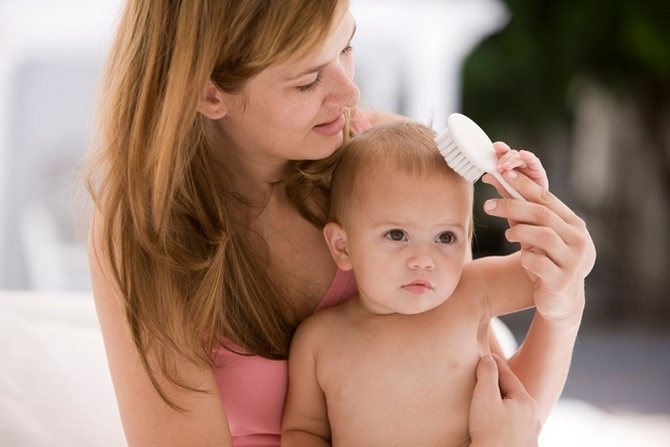
Baby being combed by mother
The child's scalp is flaky
Peeling of the scalp in children under one year of age is a fairly common phenomenon. The appearance of scales during the peeling process is explained by the excessive activity of the sebaceous glands. In addition to the head, scales are found in the baby's eyebrows. According to pediatricians, most often flaking of the scalp occurs in post-term babies, which is due to the peculiarities of their physiology in the first months of life.
In some cases, flaking of the scalp can be caused by an allergic reaction of the body, for example to shampoo, soap, even hypoallergenic ones.
In severe cases, it is better to show the baby to a doctor. But usually parents cope with this problem themselves.
It is necessary to pay due attention to the child’s regular hygiene, choose the right detergents, preferably with a neutral pH.
Sometimes a crust may form on the scalp. Under no circumstances should you try to peel off this crust, as you may damage the delicate skin underneath. There are special cosmetics for eliminating skin flakes on the head. With their help, the crust is first softened and then combed out. Instead of cream, you can apply sea buckthorn oil, which also perfectly softens the skin.
Good day! You have a new baby in your family, congratulations! The baby is so small, defenseless, his skin is tender, tender, but what is that on his head? Horror! Some strange crusts have appeared, it seems that the child’s scalp is peeling. You really didn't think so, it's true.
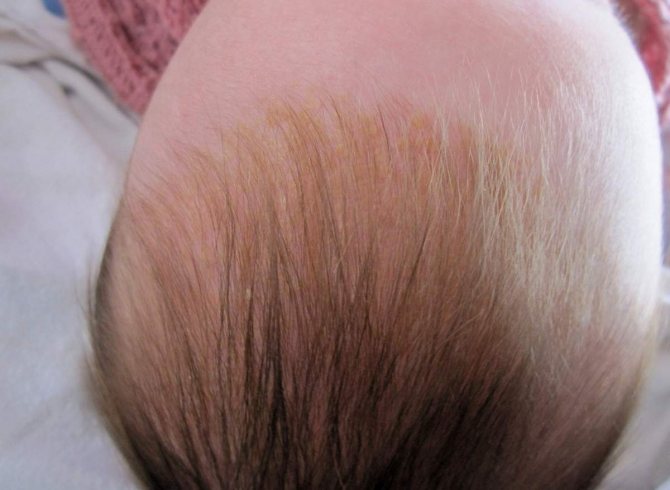
The thing is that the baby’s entire body adapts to the environment, to life in this huge world, its skin also reacts to various external and internal factors, so it can peel off. Crusts and peeling on your child’s head are an unpleasant phenomenon, but they can be easily corrected; the main thing is to correctly determine the reason why this is happening.
Prohibitions and complications
What should not be done with diathesis and seborrheic crust? Not all young parents know about the prohibitions and make mistakes that can harm the baby. Contraindications:
- Use only soft brushes for babies, without jagged edges or metal inserts, so as not to scratch the head.
- It is forbidden to pick the crust with your nails or fingers - it is painful and can cause infection.
- The crust is similar to a scab, no need to self-medicate.
- If a red swelling appears in the area of the rash, you should consult a doctor. The use of oils is prohibited.
- Comb out the remaining epithelium with smooth movements, without pressing hard on the brush.
- You cannot wash your child’s hair with shampoo every day; use the products no more than 2 times a week.
Important! Hair may fall out along with the scab. It’s not scary, everything will be restored closer to the year.
Milky crusts on the head of infants are rarely accompanied by complications. If you care for your child incorrectly, this will lead to the following problems:
- Infection of the deep layers of the skin, development of necrosis.
- Damage to hair follicles, baldness in the future.
- If this is a diathesis, then anaphylactic shock is possible.
- Scratching the scabs can leave scars.
The less often you wash your baby, the higher the risk of seborrhea. It often occurs in newborns in dysfunctional families in which parents do not care for their children. Bathing the child and carrying out all hygiene procedures are mandatory. Large areas with crusts can crack and damage the deeper layers of the skin, possibly causing infection.
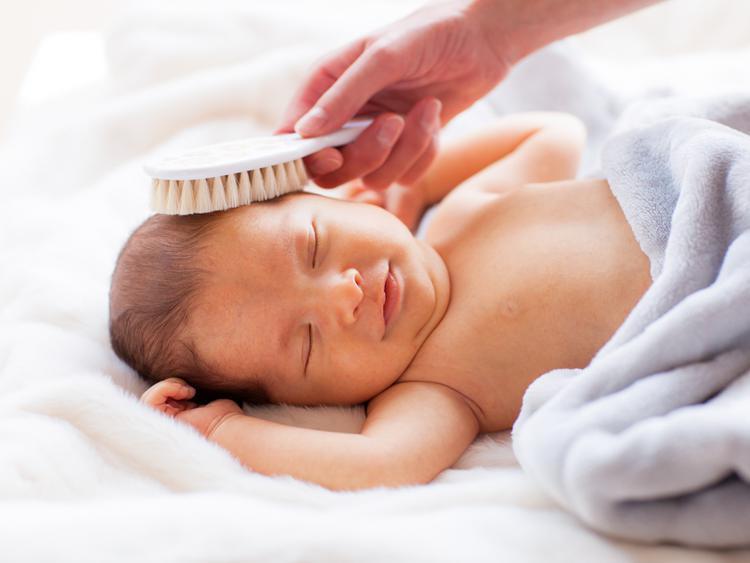
Newborn being combed
Preventive measures
Not all children have milk crusts. If the sebaceous glands work normally, and regular hygiene of the child is carried out, then seborrhea does not appear. There are preventive measures:
- The baby is bathed daily with the addition of herbal infusions.
- In the first month of life, it is recommended to use moisturizing lotions and creams.
- They use exclusively children's cosmetics that are approved from the moment of birth.
- Every morning, wipe all the baby’s folds with warm boiled water.
- If diathesis is present, the cause is found out and eliminated.
- The children's cap is changed at least once a day.
- Use children's washing powders with a hypoallergenic effect.
- Comb out the crusts, if any, with a soft baby brush.
- Change the baby's clothes at least once a day.
- Regularly coat the area behind the ear with Vaseline oil or moisturizer.
Prevention is carried out not only when there are no crusts, but also when they are present. This is done to prevent their occurrence. When using oils, you should consult your pediatrician. He will give clear recommendations and share his medical opinion. Why seborrhea occurs is described above.
Important! It doesn’t matter how expensive shampoos parents buy for their baby, the main thing is that the baby doesn’t have allergies.
Milk crusts on a baby’s head occur due to the active work of the sebaceous glands. They occur in 70% of cases in newborns. This does not mean that parents do not care for their child well. Manifestations occur due to the secretion of large amounts of sebum. Doctors' opinions on the fight against crusts are divided. The decision should be made by parents, but at the same time listen to the opinion of a specialist.
